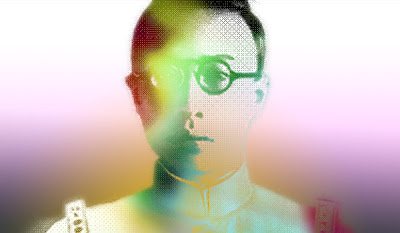Mosaic at Wat Pho, Bangkok
The richly hued terracotta is made up of varying tones and patterns which form geometric shapes, essentially composed of detailed flowers which have a wonderfully tactile feel making them irresistible not to touch.
Wat Pho is one of the delights of visiting Bangkok and one of the largest and oldest Wats in Thailand. The Wat (which means a Buddhist temple or monastery ) dates back to the rule of King Rama I ( 1782 – 1809) and the name refers to its four tessellated spires which soar 42 meters into the sky like an oriental Tower of Babel.
Wat Pho / Wat Rong Khun
The spires or ‘Chedi’s’ were built by King Mongkut and represent the reigns of the first four kings of the Chakri Dynasty with each spire made up of different coloured mosaic: green, white, yellow and dark blue, each one contrasting with the other yet all remaining integral in their relationship to the complex as a whole.
Wat Rong Khun – Notes from a Fairytale Dream
Even from a distant Wat Rong Khum conjures up a resplendent presence. Situated in northern Thailand and designed as recently as 1997 (and still uncompleted) the temple provides a conspicuous contrast to Wat Pho or indeed to any other temple in Thailand. The structure is part giant ice sculpture and part forbidden palace from a fairytale dream as it is formed exclusively in white and mirrored glass which is supposed to signify the purity and wisdom of the Lord Buddha – the temples effect of shimmering reflections from the embedded glass, illuminates in all directions which in turn creates a natural display of glittering lights.
Even from a distant Wat Rong Khum conjures up a resplendent presence. Situated in northern Thailand and designed as recently as 1997 (and still uncompleted) the temple provides a conspicuous contrast to Wat Pho or indeed to any other temple in Thailand. The structure is part giant ice sculpture and part forbidden palace from a fairytale dream as it is formed exclusively in white and mirrored glass which is supposed to signify the purity and wisdom of the Lord Buddha – the temples effect of shimmering reflections from the embedded glass, illuminates in all directions which in turn creates a natural display of glittering lights.
Wat Rong Khun, Chiang Rai,Thailand
This kinetic aura is of otherworldly proportions and the effect becomes heightened as a closer examination of the exterior reveals; mythological creatures profiled against the pale sky - demonic apparitions that dance in the light exposing an assortment of finely crafted swirls, twisted and curling ends with sharp points, mirrored eyes and serpent tongue’s spitting light in many directions. The temple is simultaneously a magnificent fantasy and a strange reality, juxtaposed against and interlaced with the surrounding landscape.
Mosaic Inspiration: Porcelain charm encased in silver





















